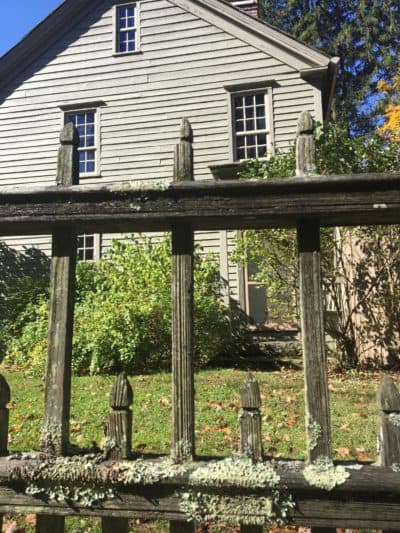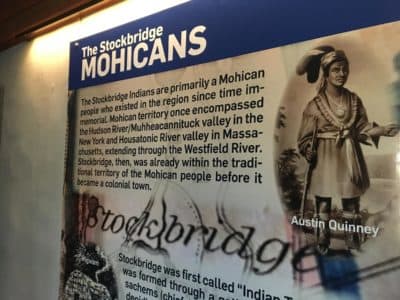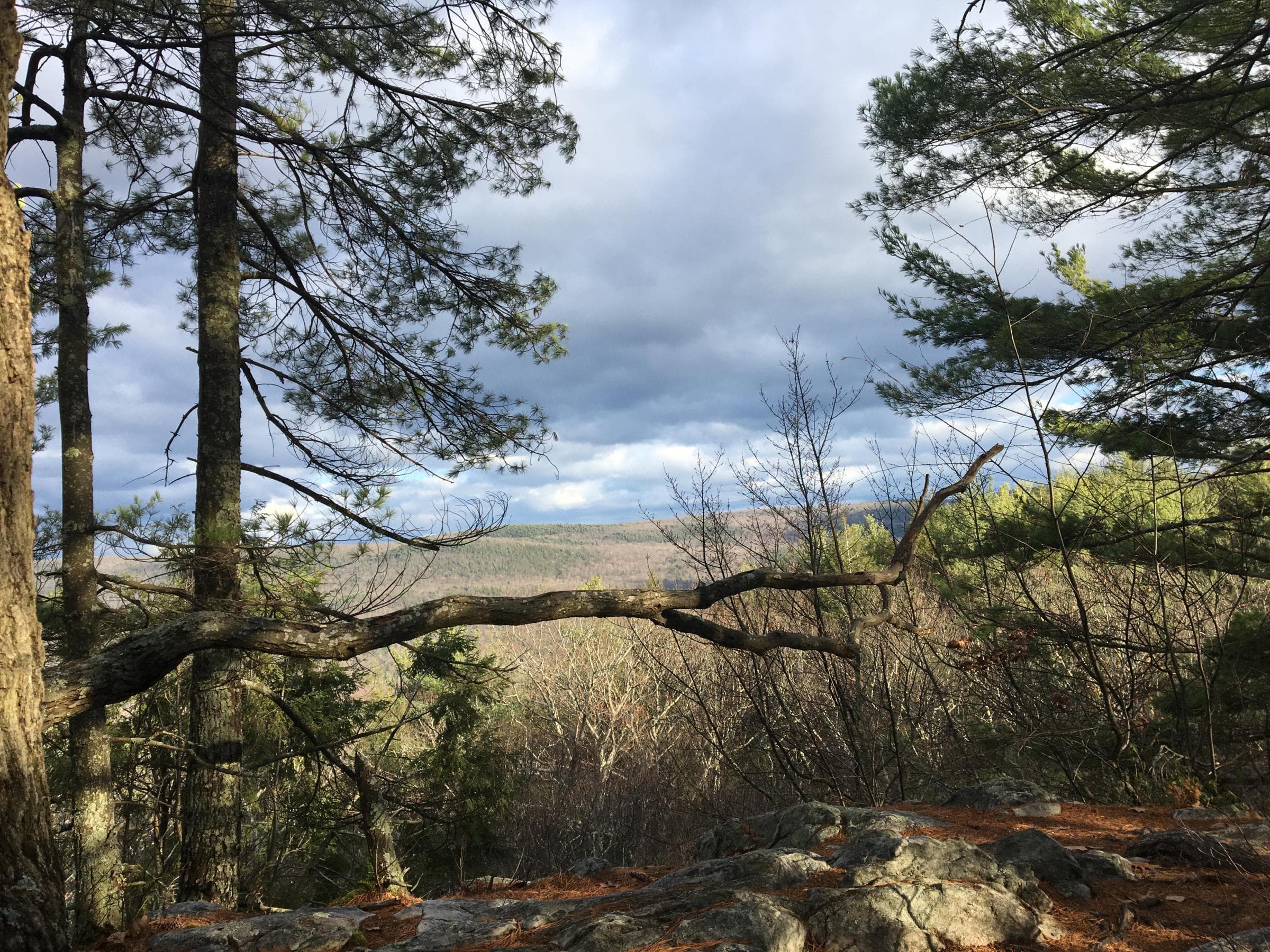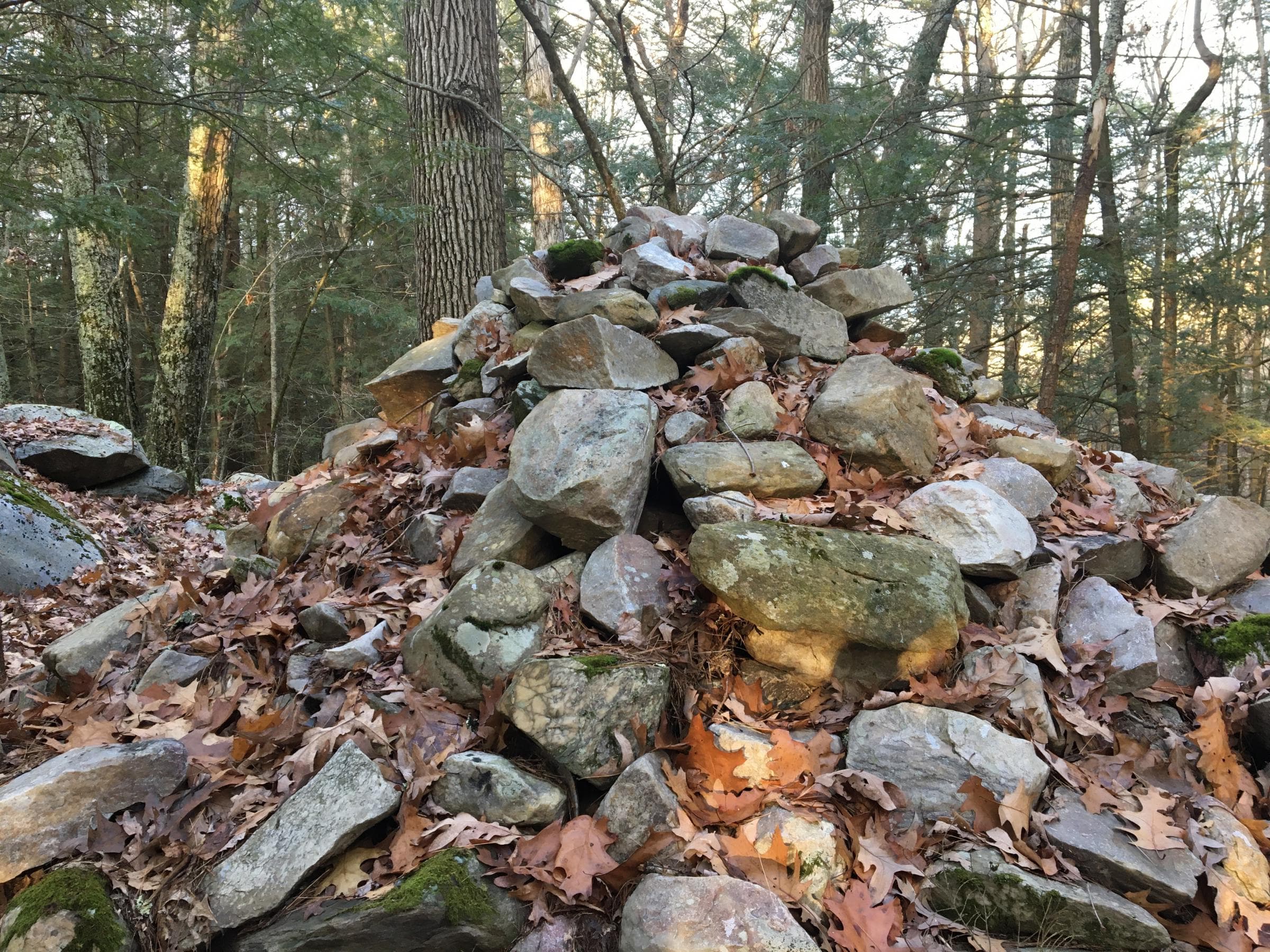The Stockbridge-Munsee Band of Mohican Indians today are based in Wisconsin. But their homeland spanned the Housatonic and Hudson river valleys, and stretched from Manhattan to northern Vermont.
Over the decades, members of the tribe have come back to the Berkshires to protect cultural sites. Tribal members are now retelling their story — and working to reclaim bodily remains and objects, including a centuries-old document.
Standing among the gravestones at the Stockbridge Cemetery, Bonney Hartley said this place is special to her — not so much because of who’s buried here, but because of who lived here.
“The land that we're standing on now is the original lands of my direct ancestor, David Naunauneecannuck,” Hartley said.
Hartley’s Munsee name is Taehaekwondoheet, which means “she has her arms around the people.” Hartley is the tribe’s historic preservation manager — work, she said, that can be frustrating and spiritually exhausting. That’s one reason she comes here.
“We feel that we can directly draw strength from our ancestors that live here. And it feels empowering to be on his land and to feel that we can connect with him,” Hartley said.
Hartley’s ancestor was part of a new township set up by royal charter in 1737. First called "Indian Town" and later Stockbridge, it was an unusual arrangement bringing colonists and native people together in a Christianized community.
At the time, the tribe was losing ground to the Dutch and English. For four days, tribal leaders discussed at a council fire whether accepting a Christian missionary was the best road to survival.
"But they eventually agreed to come here and start this experiment, really, of how to have English settlers with Mohican tribal members side by side sharing the governance of the town," Hartley said.

Native people served as selectmen, constables and surveyors. But over time, the colonists started to take control of town government — and the land.
By the end of the 1700s, dispossessed of their homelands, most of the Stockbridge Indians had left, heading west, then north. By the mid-1800s, they settled in Wisconsin.
Hartley said she’s struck by how much from her people is still in the Berkshires, but not known or seen.
"It's been erased...and it seems like to some degree on purpose," said Hartley. "What exists today is the burying ground monument. It gives a sense of everyone's dead and gone. It’s over, rather than something that connects to what happened — you know — the real story of how our tribe was dispossessed from here, and where we ended up, how we've survived."
A priority now for the tribe — and Hartley's focus — is obtaining the bodily remains of their people from museums, universities and historical societies.
"Repatriating ancestors who've been disturbed from the ground and are on shelves, to rebury them and to repatriate other cultural objects that are important to our community," Hartley explained.
Also important to the tribe is reclaiming history — whether that’s obtaining an 18th century bow made of hickory wood that a Stockbridge family discovered behind a chimney of their old house, or making the tribe’s story more prominent in historic buildings.
One example: The Mission House in Stockbridge.
This 1742 house museum, owned by The Trustees of Reservations, is curated by Mark Wilson. For a long time the museum focused on John Sergeant, the missionary to the Stockbridge Indians. His office was the first thing visitors saw.
"It’s where he met with members of the Stockbridge Mohican tribe, particularly Chief Konkapot and Lieutenant Umpacheene. It was furnished with his desk and some chairs," Wilson said.

But a few years ago tribal members asked why their story wasn’t more prominent. Now, Sergeant’s office has been moved. In its place: a display, written by tribal members, telling their history. And in a glass case, "a conch shell which was used by the tribe to call people to meetings and to worship," Wilson said.
Besides shifting the story of The Mission House to the perspective of the Stockbridge Mohicans, Wilson said The Trustees is also changing some names and signs on a mountain about three miles south of here.
Hiking up Monument Mountain, in Great Barrington, I come across Chris Graham, and his dog Sophie. I asked if he knows why it’s called Monument Mountain.
"I don’t," said Graham, who hikes here often. "I know that there’s the monument at the top of it, the inscribed rock."
That inscription describes the donation of the land to The Trustees. But the name — "monument" — refers to something left behind by the native people, explained retired Stockbridge police chief and local historian Rick Wilcox.

"There is an actual pile of stones or a cairn on the far side of the mountain. It was along the Indian trail between Great Barrington, Sheffield and Stockbridge. They would travel by that path and when they went by it, they would drop a rock on the pile," said Wilcox, on a walk up the mountain.
It’s considered a sacred site. But treasure-hunting vandals looted the pile in 1840. It was later reconfigured, but it’s not well-marked. Before we found it, Wilcox took me to the wind-swept summit.
"They call this part Squaw Peak," Wison said.
But "squaw" is now considered a derogatory slur. The Stockbridge Mohicans have asked the Trustees to change the name to “Peeskawso,” meaning virtuous woman. The Trustees is doing that, as well as renaming a trail and adding signage to better reflect tribal culture.
As we descended, Wilcox pointed out the monument — the stone pile, around 5 or 6 feet tall.
"It’s wonderful to be able to see it. And it’s unfortunate that it was desecrated," Wilcox said. "You know, so much of their history has been hidden or wiped out, and so this I guess is in some ways an example of a piece of their history that was kind of brought back to life."

Wilcox described another piece of Mohican history, which was recently discovered in a vault in the old town hall in Stockbridge — an original 1780 document.
"A request from the tribal leaders to hold a meeting of the Indian proprietors of the town. And it was signed by all of the tribal leaders," explained Wilcox. "And it’s absolutely incredible that it survived until now. And it’s extremely important in terms of tribal history."
Important because it shows the tribe was taking action to end its relationship with two colonists who represented the tribe in land sales, and who were doing the tribe wrong.
"Every indication from the records that I’ve looked at, that the two English settlers were helping themselves to land. And the Mohican people were already being dispossessed at a very rapid pace," Wilcox said.
Wilcox said he jumped up and down when he learned about the discovery of the document.
Hartley said as she held this paper in her hand, signed by her ancestors, she could feel their struggle to hold onto their land.
"You feel the words on the page like they're being spoken to you, by that person, right now. It’s just a very powerful experience," she said.
Hartley said the tribal museum in Wisconsin doesn’t have any original documents from the 1700s. She’s hoping the Stockbridge Town Meeting will vote in May to take steps to give it to the tribe.
"When there are original documents, we always get a copy," Hartley said. "You know, we are always the ones that just get a copy of what it is or the transcription, but we don’t get to have our own ancestors' writings."
Getting it may mean facing a legal hurdle. A Massachusetts law requires certain city or town documents created before 1870 be retained. It’s not clear yet if that law applies, but Hartley hopes, with the goodwill the tribe has now in Stockbridge, that the timing is right to reclaim this piece of history.
This story is a production of the New England News Collaborative. It was originally published by New England Public Media on Jan. 11, 2021.
"story" - Google News
January 17, 2021 at 04:11AM
https://ift.tt/3iweiGJ
'It's Been Erased': Stockbridge Mohicans Retell, Reclaim Their Story In Berkshires - WBUR
"story" - Google News
https://ift.tt/2YrOfIK
https://ift.tt/2xwebYA
Bagikan Berita Ini















0 Response to "'It's Been Erased': Stockbridge Mohicans Retell, Reclaim Their Story In Berkshires - WBUR"
Post a Comment